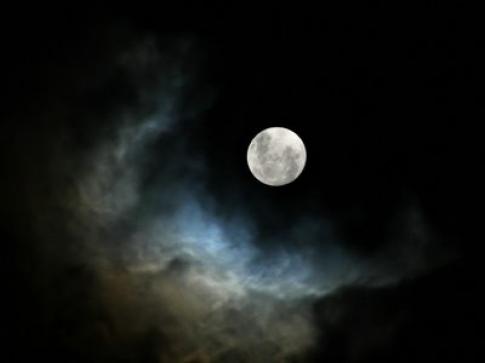Evidence of water beneath Moon's stony face

It is not raining on the Moon, but it does seem to be getting wetter and wetter.
Kenneth Chang
For decades, the prevailing view of the Moon was that it was dry. Then, two years ago, a National Aeronautics and Space Administration (NASA) probe crashed into a deep crater near the Moon's south pole and confirmed large amounts of water ice within the shadows. Meanwhile, measurements by an orbiting Indian spacecraft suggested that a veneer of water, generated by the bombardment of solar wind particles, covered much of the Moon's surface. Now, scientists analysing tiny fragments of hardened lava from long-ago lunar eruptions report that the fragments contain about as much water as similar magmas on Earth, meaning there is plenty of water inside the Moon too.
“I have to admit, we were a little surprised,” said Erik H. Hauri, a staff scientist in geochemistry at the Carnegie Institution of Washington and lead author of a paper published on May 26 in the journal Science.
Dr. Hauri's surprise comes despite the fact that he and several of his co-authors predicted three years ago that they would find that much water. Back then, they looked at tiny beads of volcanic glass — the beads were about the size of periods in printed text — in soil brought back by Apollo astronauts. The beads contained water, but not a lot a lot of it: a maximum of 46 parts per million — or 0.0046 per cent water. Their models suggested that 95 per cent of the water originally in the hot magma escaped as it cooled. Dr. Hauri acknowledged that the extrapolation was less than ironclad. The new work started when another member of the research team, Alberto E. Saal, a professor of geological sciences at Brown University, handed a vial of Moon dirt to Thomas Weinreich, a Brown freshman, and asked him to sift through it for interesting particles.
As Mr. Weinreich laboriously examined the soil, grain by grain, under a microscope, he found, mixed among the glass beads, some clear crystals; some of those crystals contained a tiny amount of glass.
The crystals, made of the mineral olivine, prevented any of the water in the enclosed glass from escaping. The amount of water in the trapped glass was 20 to 100 times what had been previously measured in the glass beads, comparable to the water content of some Earth magmas. “There is a reservoir down there in the Moon that has the same concentration of water as some reservoirs in the upper mantle of Earth,” Dr. Saal said. “That's for sure.”
What is much less certain is how large the underground water-rich reservoir might be. Last year, researchers led by Zachary D. Sharp of the University of New Mexico came to the exact opposite conclusion. Based on concentrations of chlorine isotopes in lunar rocks, they concluded that the rocks must have hardened out of lava that contained almost no water. But if the interior of the Moon turns out to contain considerable water, then the ice at the bottom of lunar craters may have come from volcanic eruptions rather than comet impacts.
The finding would also throw a new wrinkle into explanations of how the Moon formed in the aftermath of a collision between the Earth and a Mars-size interloper about 4.6 billion years ago. But scientists have not been able to fully explain what makes up the Moon, and the water finding potentially adds another mystery. — © New York Times News Service




 del.icio.us
del.icio.us Digg
Digg

Post your comment